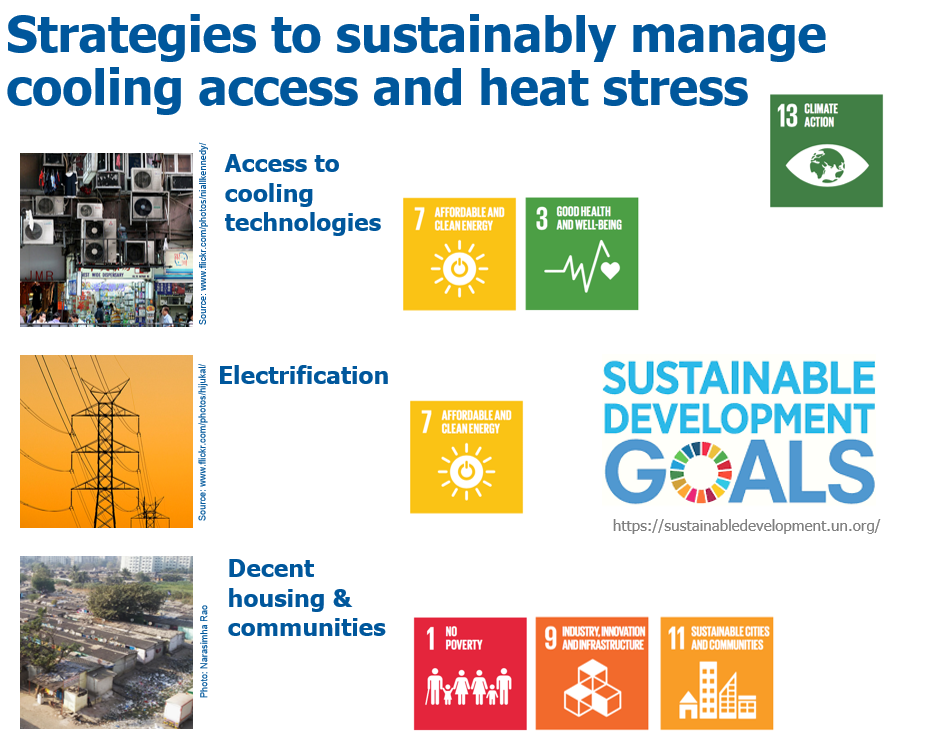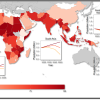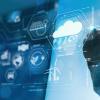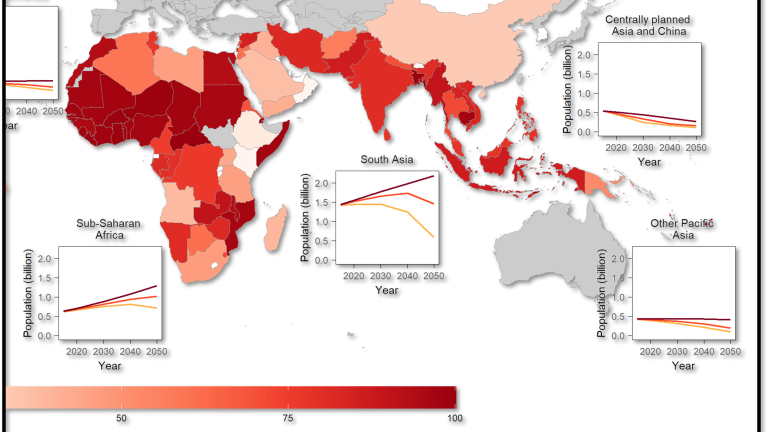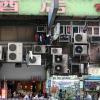
A warming climate brings both higher average and peak temperatures – putting stress on humans, animals, crops, and infrastructure systems, including energy supply and demand. But how will people and institutions cope with warmer temperatures, what is our capacity to adapt to changing conditions and what are the subsequent implications of our adaptation choices?
Combining climate impacts, econometric and integrated assessment models, ongoing work explores the key drivers of capacity to adapt to climate impacts like heat stress and subsequent energy and emissions implications of keeping us cool.
A number of researchers in the ECE program have worked intensively on the nexus between global warming, heat stress and heat waves, air conditioning access, vulnerability and energy demands. This includes:
- development of spatial climate indicators on cooling degree days and heat stress events, including use of wet bulb temperatures
- projections of access to cooling and the cooling gap (Mastrucci et al. 2018; Andrijevic et al. 2020)
- estimates of heat stress and residential cooling demands in megacities and for the world (van Ruijven et al 2018; Mastrucci et al. 2020, 2021)
- age-dependent exposure and vulnerability (Thiery et al 2021; Carr et al. 2023
Explore global heat stress indicators on the Climate Solutions Explorer
The recently launched Climate Solutions Explorer includes new indicators on heat stress events and tropical nights for different climate scenarios from present day to 3.5 °C global mean temperature.
Explore the interactive map and discover how many people could be exposed to heat stress and other climate impacts for all regions and countries in the world.
Cooling and Heating gLobaL Energy Demand model (CHILLED)
CHILLED is a global scope, spatially explicit and physically based model for estimation of building space heating and cooling requirements.
It combines high resolution climate data, building physics representation and socioeconomic and behavioural data. CHILLED is used for estimating long term growth in demand for space conditioning (heating & cooling), the associated energy demands and carbon emissions, and the population lacking cooling access (cooling gap).
Selected publications
Carr, D., Falchetta, G. , & Wing, I.S. (2024). Population Aging and Heat Exposure in the 21 st Century: Which U.S. Regions Are at Greatest Risk and Why? The Gerontologist 64 (3) gnad050. 10.1093/geront/gnad050.
Mastrucci, A. , Byers, E. , Pachauri, S. , Rao, N. , & van Ruijven, B. (2022). Cooling access and energy requirements for adaptation to heat stress in megacities. Mitigation and Adaptation Strategies for Global Change 27 (8) art.no. 59. 10.1007/s11027-022-10032-7.
Nutkiewicz, A., Mastrucci, A. , Rao, N. , & Jain, R.K. (2022). Cool roofs can mitigate cooling energy demand for informal settlement dwellers. Renewable and Sustainable Energy Reviews 159 e112183. 10.1016/j.rser.2022.112183.
Mastrucci, A. , van Ruijven, B. , Byers, E. , Poblete-Cazenave, M., & Pachauri, S. (2021). Global scenarios of residential heating and cooling energy demand and CO2 emissions. Climatic Change 168 (3-4) e14. 10.1007/s10584-021-03229-3.
Andrijevic, M. , Byers, E. , Mastrucci, A. , Smits, J., & Fuss, S. (2021). Future cooling gap in shared socioeconomic pathways. Environmental Research Letters 16 (9) e094053. 10.1088/1748-9326/ac2195.
Mastrucci, A. , Byers, E. , Pachauri, S. , & Rao, N. (2019). Improving the SDG energy poverty targets: residential cooling needs in the Global South. Energy and Buildings 186 405-415. 10.1016/j.enbuild.2019.01.015.
van Ruijven, B. , De Cian, E., & Sue Wing, I. (2019). Amplification of future energy demand growth due to climate change. Nature Communications 10 (1) 10.1038/s41467-019-10399-3.
Byers, E. , Gidden, M., Leclere, D., Burek, P. , Ebi, K.L., Greve, P., Grey, D., Havlik, P. , Hillers, A., Johnson, N., Kahil, T. , Krey, V. , Langan, S. , Nakicenovic, N., Novak, R., Obersteiner, M. , Pachauri, S. , Palazzo, A. , Parkinson, S. , Rao, N. , Rogelj, J. , Riahi, K. , Satoh, Y., Wada, Y. , & Willaarts, B. (2018). Global exposure and vulnerability to multi-sector development and climate change hotspots. Environmental Research Letters 13 e055012. 10.1088/1748-9326/aabf45.







